It had actually started as a beautiful September trip. An Omega weather situation gave me southerly winds between 3 and 5 Beaufort and so I could sail in 42 hours from Lohme on Rügen non-stop to Smögen in Sweden (about 240 nautical miles) and after a short break there the next morning again about 50 nautical miles to Verdens Ende in Norway.
This should be my 1st qualification for a later trip in the next years to Portugal. Due to the really favorable conditions, everything worked out very well, even the night passage with many short “powernaps” was not a problem at all, but much easier than I thought. For next year I think as a 2nd qualification of a non-stop trip over 330 nautical miles (about the Biscay distance Brest – A Coruna), perhaps towards Estonia.
So far so good. Back I sailed in small legs via Smögen and Marstrand to Gothenburg, where I took my friend Thomas on board on Friday. The plan was to sail back to Germany together in less than a week. However, we did not get far. On Sunday around 13:30 o’clock we sailed in the Kattegat approx. 10 nautical miles west of Falkenberg with WSW between 18 – 22 knots and a wave height approx. 1.50 m with half wind, the main maximally reefed and jib direction south.
Suddenly, a short shake went through the ship and we heard a loud scraping sound from below. The ship immediately lost steering ability and went into the wind. The steering wheel turned freely and the rudder shaft synchronously turned, but there was no more rudder effect. We probably sailed over something that must have been just below the surface of the water, but couldn’t see anything far and wide. The bilge remained dry, so fortunately no water ingress. We took down sails, called Sweden Rescue via VHF and the Swedish Sjöräddning towed us to Falkenberg.
Video of the 1rst part of the journey (about 17 min.)
On Tuesday evening we were able to lift the boat at the Falkenbergs Batsällskap sailing club and inspected the damage. The friendliness and helpfulness of the Swedish sea rescuers and the guys from the sailing club was overwhelming and helped us a lot to cope with the completely unfamiliar and unclear situation.
The stainless steel rudder shaft has broken at the junction between the 79 mm upper part and the slightly smaller diameter lower part, just below the weld between the two parts. The lower part of the rudder shaft and most of the laminate have disappeared. Only a small portion of the laminate remains in the upper section. The very solidly built rudder coker and bearings appear to have remained completely intact. Great relief, at least that. There is damage to the coating halfway up the front of the keel, suggesting an impact: perhaps a beam that first struck the front and then rotated behind the keel, knocking the rudder off. We do not know.
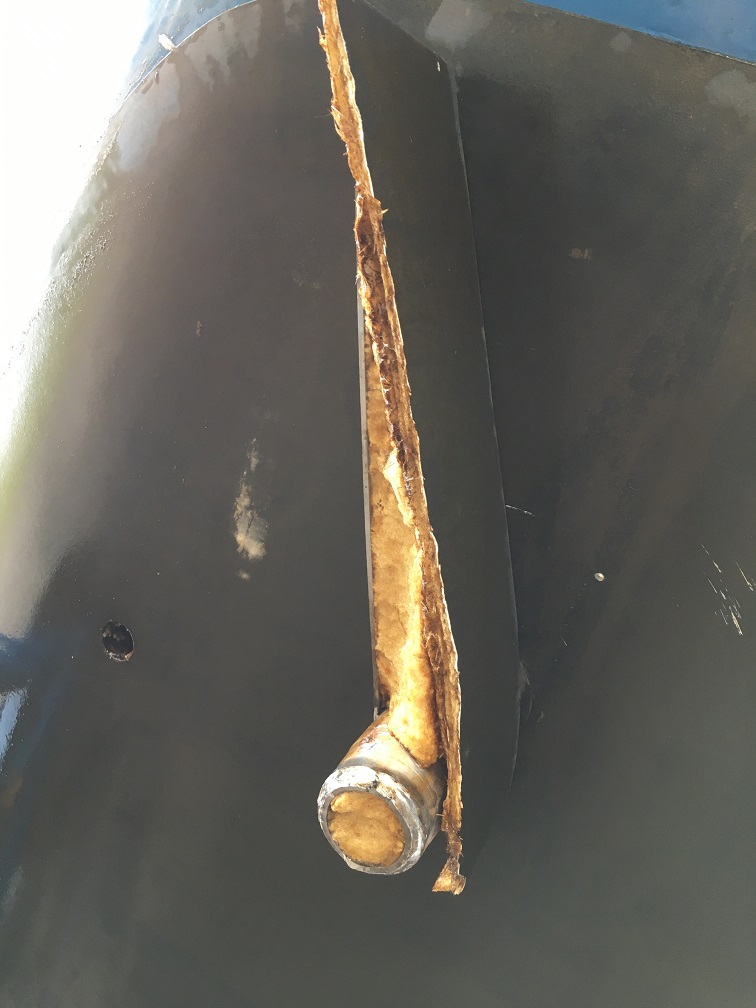
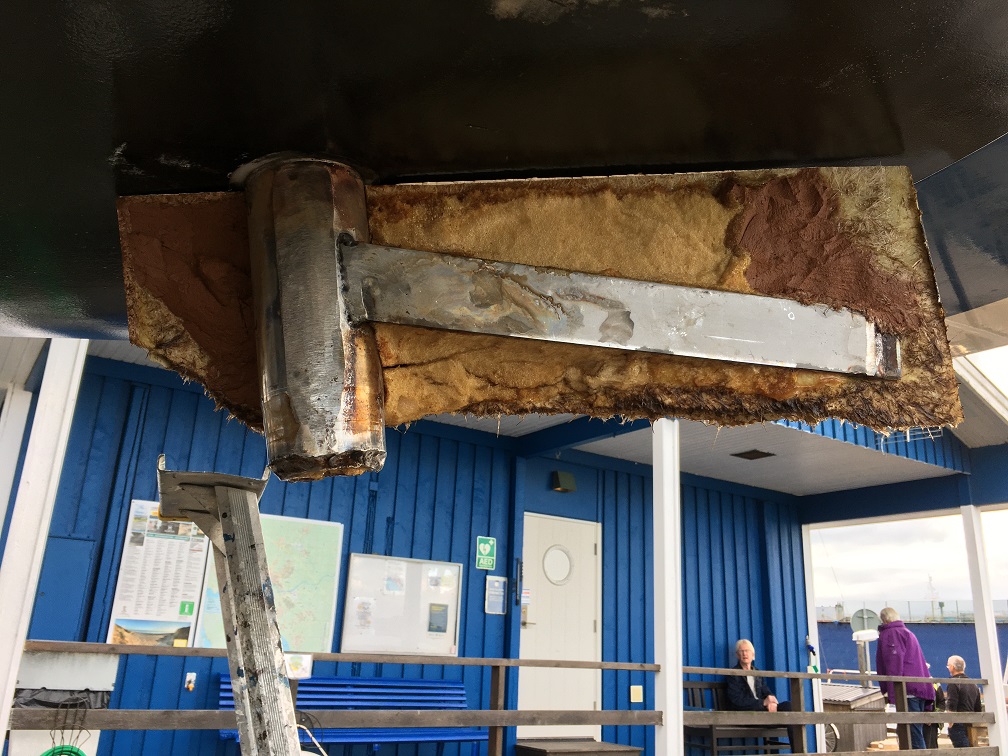
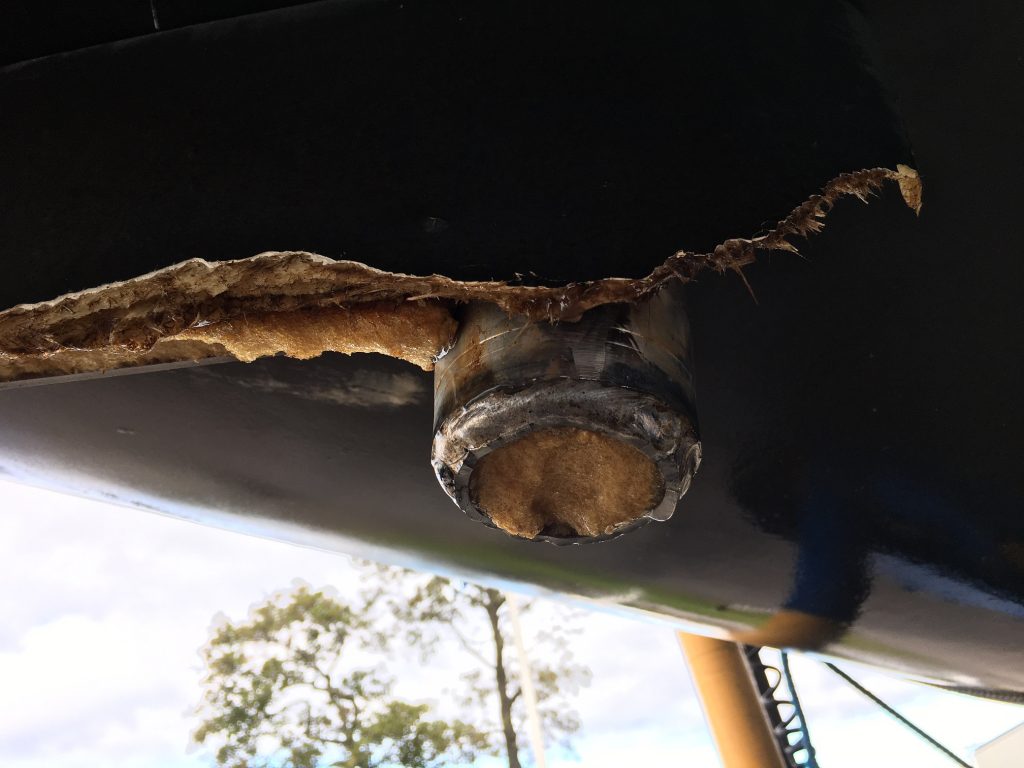
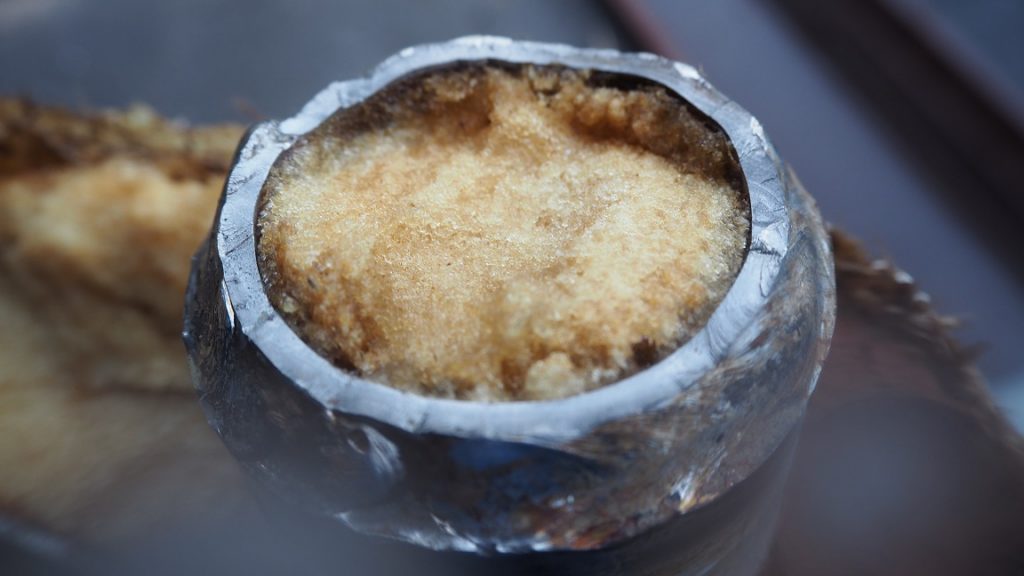
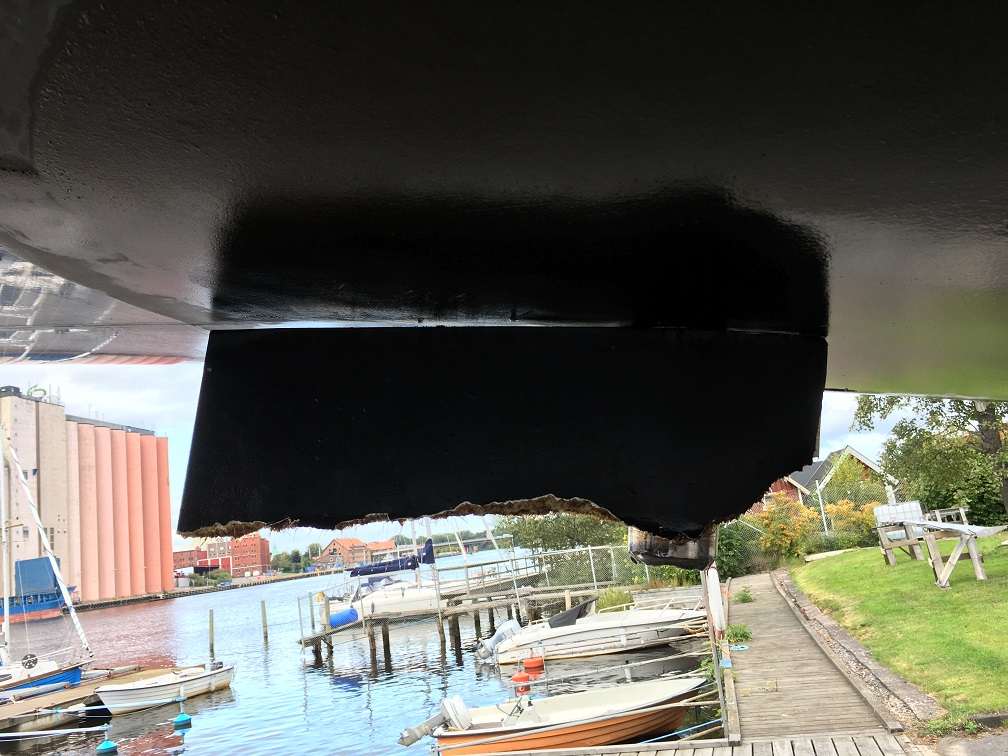
We completely removed the remains of the rudder. A repair based on the leftovers seemed hopeless. We contacted Jefa Rudder Systems in Copenhagen to check the possibility of making a new rudder and to get a cost estimate. Jefa recommended the presentation of the remaining rudder parts to be able to make a cost estimate. With a rented car we brought the remains of the rudder to Jefa in Copenhagen. A tour of the factory, taking measurements and advice for the production of the new rudder convinced me quickly and completely and I ordered the production on the spot. The next day, I received the construction drawing for review and after clarification and adjustment of individual details, the go-ahead for production was given. With a little back and forth in production planning, Jefa was even able to speed up the production and announced a delivery in 2 weeks, so that I could hope to bring the ship back to Germany still in October.
The new rudder was delivered on time as announced, and a few days later I was able to have the ship slipped again and install the new rudder with the energetic help of the guys from the sailing club. Contrary to my concern that some dimension would deviate, everything really fit exactly to the millimeter. However, the new rudder including the shaft is about 2.70 m long and the ship had to be lifted accordingly. But even that went smoothly thanks to Stefan, the guy who manages the travel lift. Jefa had made an 8 mm thread at the head of the shaft, into which we screwed a threaded rod, which we could then pull upwards, turn by turn, using a nut. After about 2 hours, the shaft was completely in place and the locking bolt was fixed.
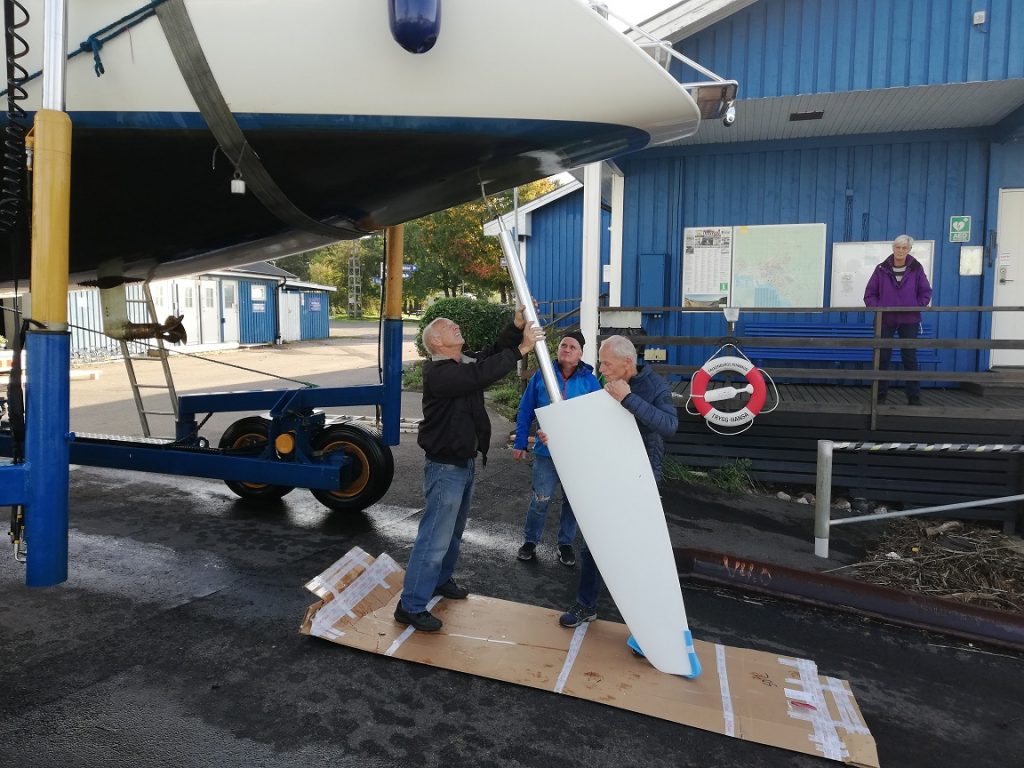
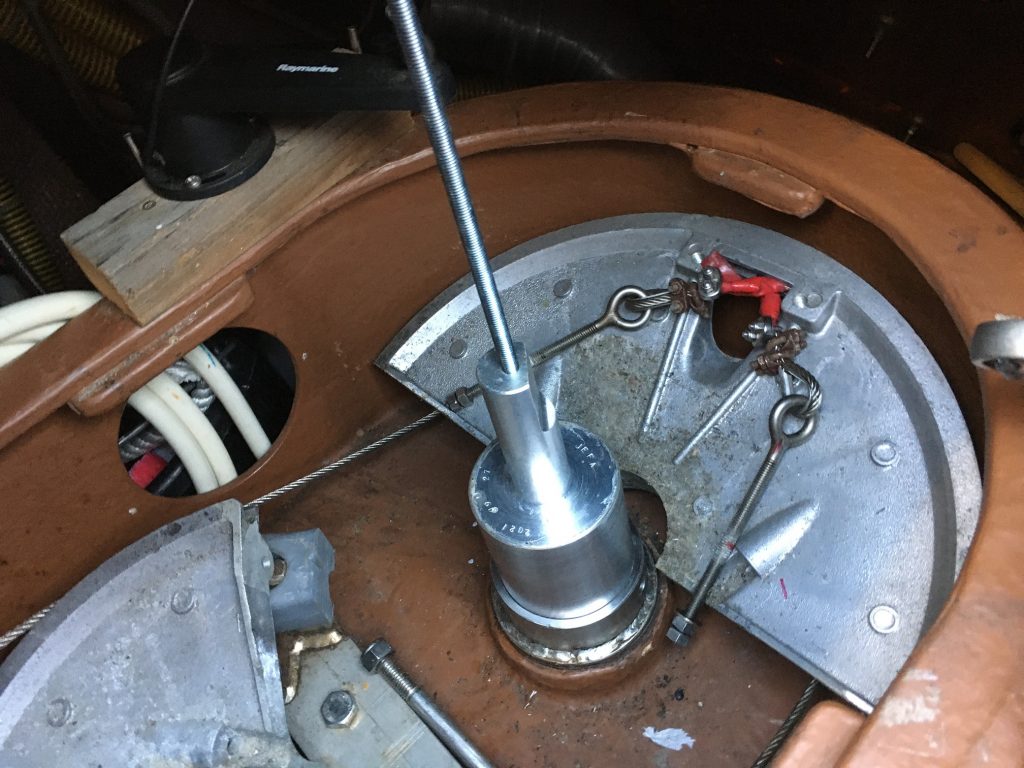
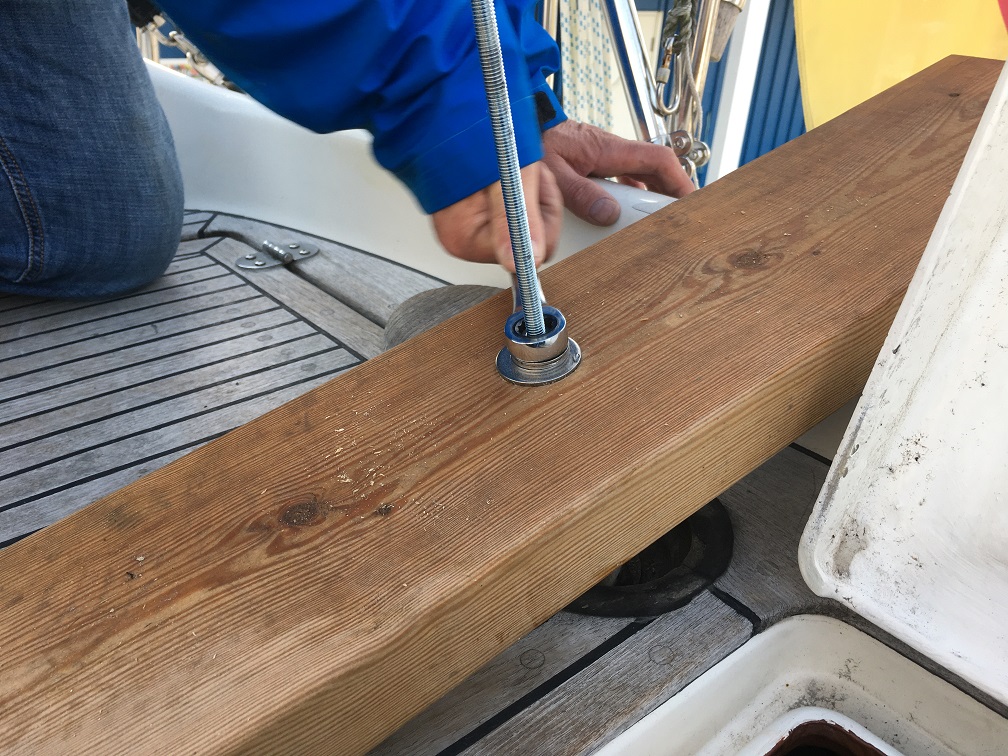
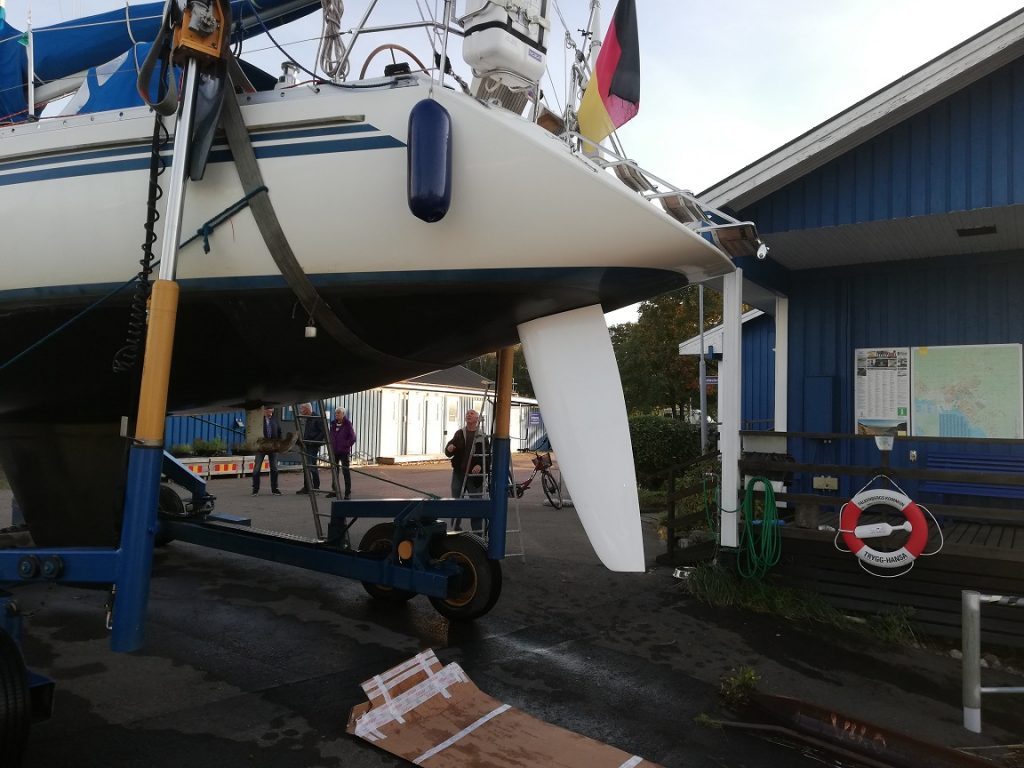
However, I did make one gross mistake out of ignorance and in my excitement: I lubricated the shaft and the plastic bearings with shaft grease – with the paradoxical effect that the rudder is now very sluggish. Lubrication of the shaft bearings should only be done by seawater – my mistake. When going into winter storage, I will have to pull the shaft again and clean the bearings and shaft to then have a seawater-lubricated smooth-running rudder next season.
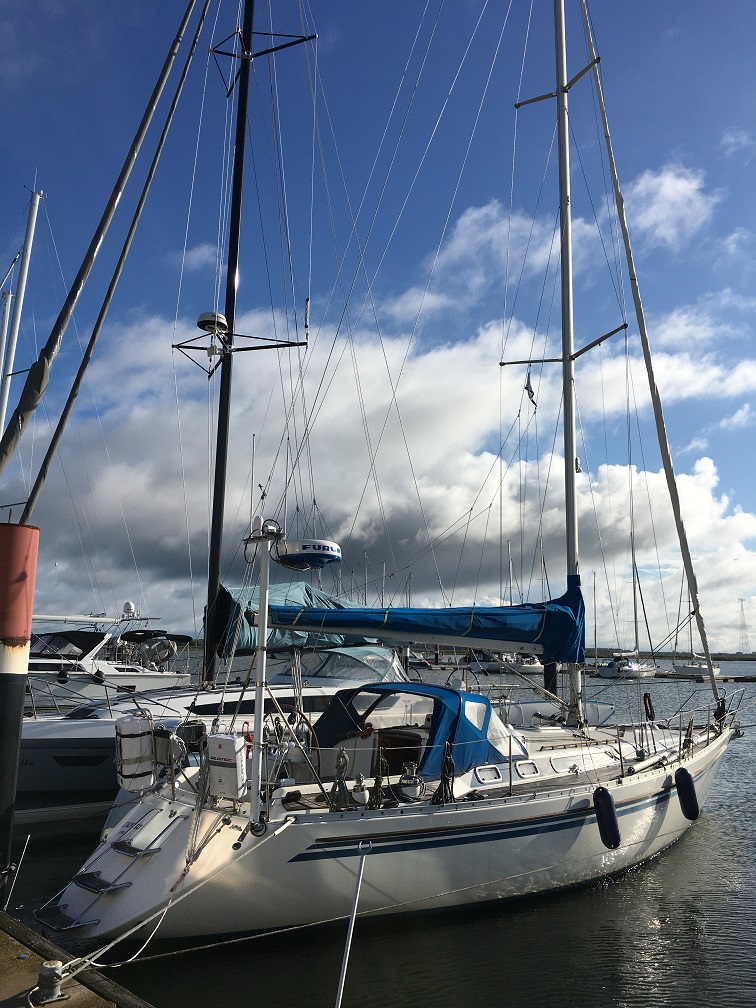
After a quick and smooth return transfer, the ship is now back in its home port, waiting to go into winter storage.
Video of the journey back (around 3 min.)
Great appreciation also for Wehring&Wolfes: the insurance company had the damage described in writing and documented by photos and then immediately agreed to cover the costs. With total costs of several thousand Euro – despite high own contribution – this is really good news and a great help!
All in all, a massive experience! It felt like being knocked off my feet at full speed and made me realize very clearly how fragile and vulnerable such a ship ultimately is. I can’t imagine what such a rudder breakage would have meant when entering difficult archipelago waters in wind and waves. Or in the middle of the Bay of Biscay. I still have to come to terms with that. The best experience was the friendliness and helpfulness of the Swedish sailing companions and sea rescuers, and the speed and precision with which Jefa delivered an absolutely suitable replacement rudder.
And last but not least: Falkenberg is a place that you usually pass by quickly on your way north or south. That’s a shame, because it’s well worth spending some time here if you have a few days. Falkenbergs Batsällskap offers a nice and tidy little harbor with all service facilities such as clean showers and toilets, free bicycles, sewage disposal and even a travel lift. A large supermarket is within walking distance in 10 minutes as well as a very nice and huge swimming beach.
-
Recent Posts
Recent Comments
- Calypsoskipper on Expose Finngulf 39
- Christian on Expose Finngulf 39
- Calypsoskipper on Expose Finngulf 39
- Kenneth Melcher on Expose Finngulf 39
- alex on Saildrive diaphragm – replace according to instructions or just keep?
Kalender
January 2026 M T W T F S S 1 2 3 4 5 6 7 8 9 10 11 12 13 14 15 16 17 18 19 20 21 22 23 24 25 26 27 28 29 30 31 Tags
12 V Verkabelung 12 V wiring Anchor windlass Ankerwinde Biscaya Bora Segel Bretagne Brittany Camaret sur mer circuit distribution Cornwall Cowes Cuxhaven Den Helder Diaphragm English Channel Falkenberg falkenbergs Båtsällskap Falmouth Gezeitensegeln havarie Hydrogenerator Lewmar Ocean Membrane MiniPlex-3USB-N2K Nordsee Norwegen Oxley Parasailor Plymouth Ramsgate Saildrive Saildrive diaphragm Saildrive Membrane SailingGen Seenotrettung Segeln in Tidengewässern Sjöräddnings Sällskapet Skagen Skagerak Stromkreisverteilung tidal navigation tidal water routing Tidennavigation ÄrmelkanalArchiv
Kategorien
